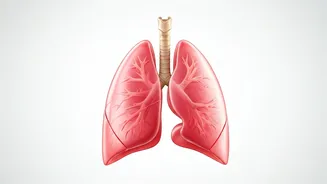Initial Misconceptions Addressed
One prevalent myth suggests that if a child doesn’t appear to struggle for breath, they cannot have asthma. This is incorrect. Asthma symptoms vary. Some
children might exhibit subtle signs like coughing or wheezing, while others face severe breathing difficulty. Another common fallacy is assuming a child can't develop asthma after the age of four. Asthma can manifest at any age; there's no fixed timeline. Furthermore, the belief that inhalers lead to addiction is misleading. Inhalers contain medication that help manage symptoms, and their proper use, as advised by a doctor, does not create dependency.
Inhaler Usage Explained
Many parents worry about inhaler use, with some believing frequent use causes the medication to become ineffective. This is a myth. Doctors prescribe inhalers for regular use to control inflammation and prevent asthma attacks. Inhalers do not diminish their own effectiveness over time when used as prescribed. Some think it is better to treat symptoms only when they appear, rather than using regular medication. However, regular medication, as advised by a doctor, can greatly reduce the frequency and severity of asthma episodes by preventing inflammation in the airways.
Growth Concerns Dispelled
A common fear among parents relates to the use of steroid inhalers potentially hindering a child’s growth. This worry, however, is not generally supported by medical evidence. While high doses of oral steroids might affect growth, inhaled corticosteroids used in asthma treatments usually have a minimal impact on a child's development. Always consult with a doctor for specific guidance on your child's asthma management plan. A physician will consider several factors before prescribing treatment, weighing the benefits of controlling asthma against any possible risks.
Seasonal Triggers Identified
Winter often exacerbates asthma symptoms in children. Cold air can trigger bronchospasms, making breathing difficult. Additionally, winter usually means more time indoors, leading to increased exposure to allergens such as dust mites and pet dander. Respiratory infections, more common during this season, can also trigger asthma attacks. Parents should monitor their children for these triggers. Implementing effective strategies, such as using humidifiers and avoiding unnecessary exposure to irritants, is critical in managing winter asthma flare-ups and minimizing the impact on children.











